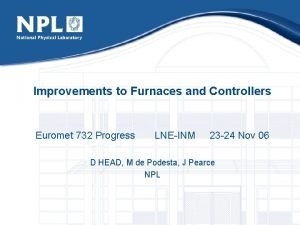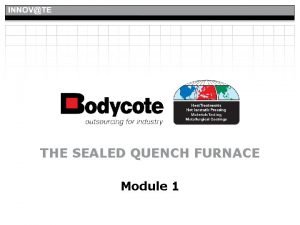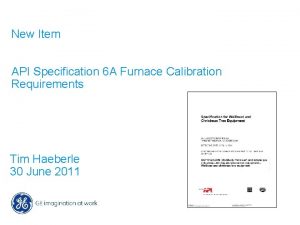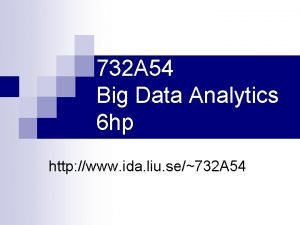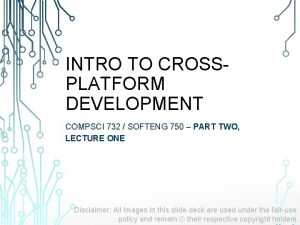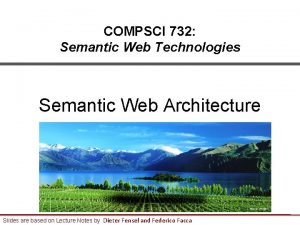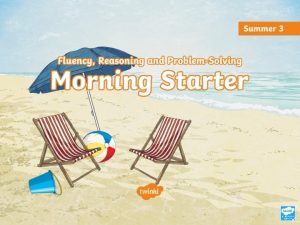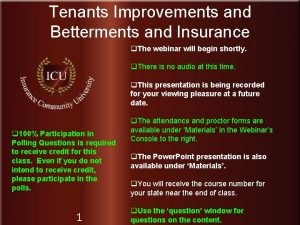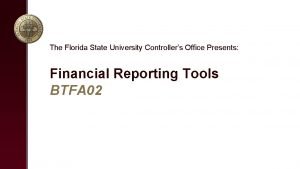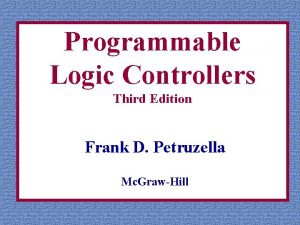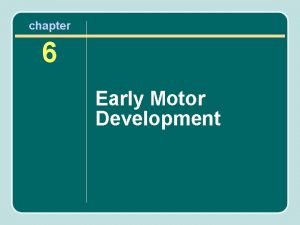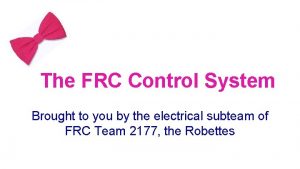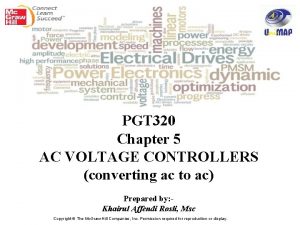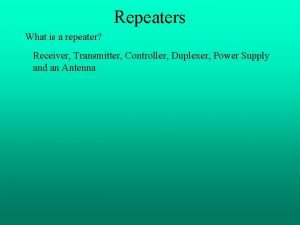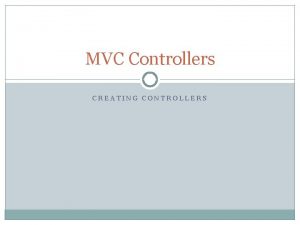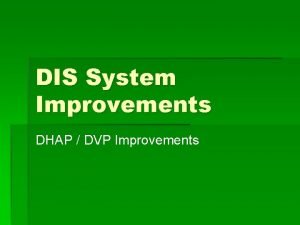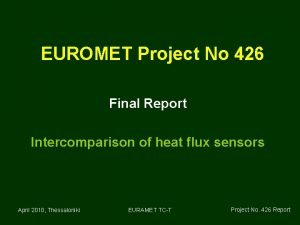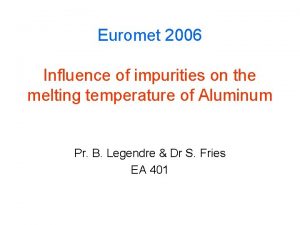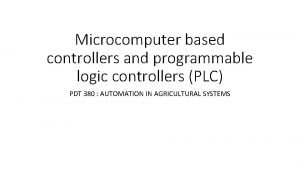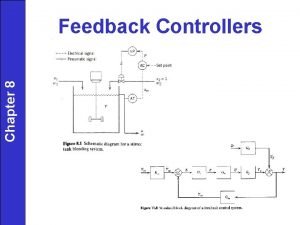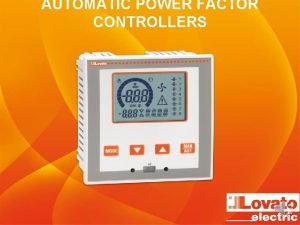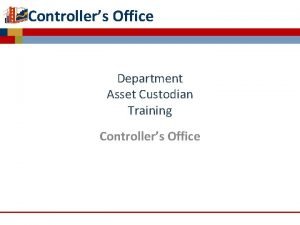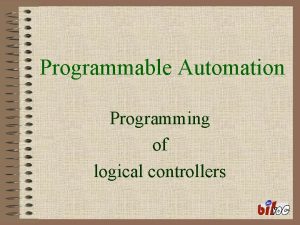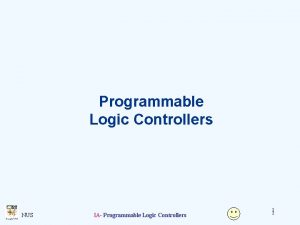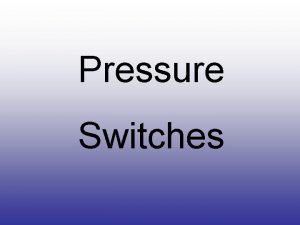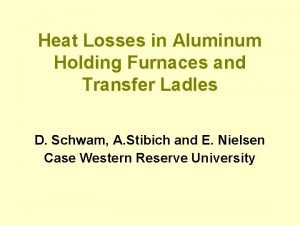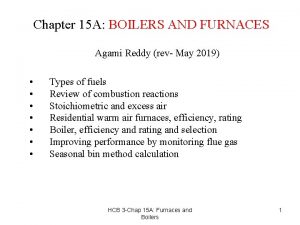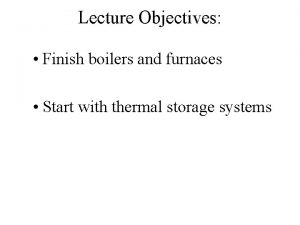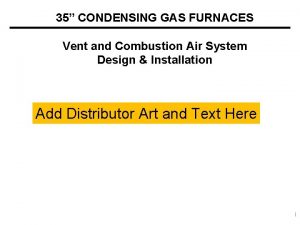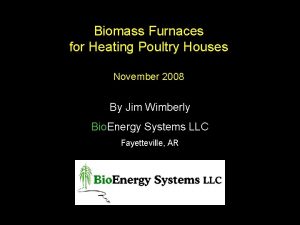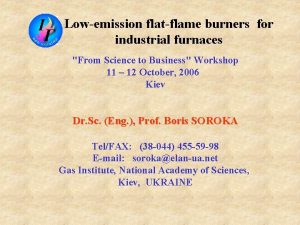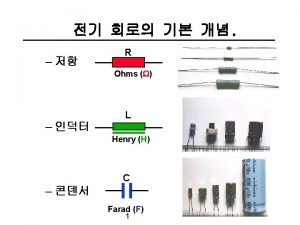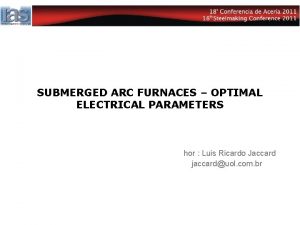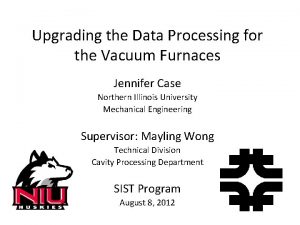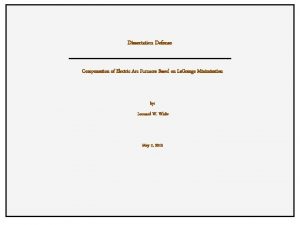Improvements to Furnaces and Controllers Euromet 732 Progress


























- Slides: 26

Improvements to Furnaces and Controllers Euromet 732 Progress LNE-INM 23 -24 Nov 06 D HEAD, M de Podesta, J Pearce NPL

Talk • Electrical Noise Reduction – Pick up from thermometer in furnace – Pick up from standard resistor in bath – Optimal Averaging • Furnace Uniformity – Three zone performance – Cascade control • Thermal Modelling – ‘Swiss’ Roll

Electrical Noise in furnace • AC furnaces – Thyristor controller Mains voltage – Cheap but noisy • DC furnaces – variable voltage – Expensive but quieter (except magnetic field near PS) • Reduced Voltage AC Thyristor heaters – Cheaper – Crude external max power limitation – Quieter – But… • Need to shield temperature controller (mild steel) • Additional Transformer cost • Extra Power leads – safety

Furnace Power 1. Mains Thyristor PID Controller Control Box

Furnace Power 2. Reduced Voltage Thyristor PID Controller Thyristor Control Box

Furnace Power 3. Reduced Voltage Thyristor PID Controller Thyristor Control Box

Electrical Noise Standard Resistor Baths & UPS • Noise pick up via Standard Resistor – In oil bath systems eg Grant, Huber and Hart (wtpc bath) etc. – Reduced by peltier systems? Untested at NPL – Reduced by keeping Standard resistor further from heater – Noise depends on resistor value/design? • UPS may increase F 18 NOISE! – unless phase locked • Noise Traces (F 18 in manual mode– no “Balancing Noise”) – Standard resistor bath AC, Variac®, DC – AC, cycle time, Variac, DC

Noise reduced when Standard Resistor Bath switched off DC furnace reduces midtrace DC Power Supply

Noise Traces AC, DC & Hc DC furnace quieter than 230 V thyristor Standard Resistor Bath switched off DC Power Supply

Noise Traces Heating Cycle Time Reduced firing rate reduces noise Cycle Time 3 s Cycle Time 30 s Cycle Time 10 s

Noise Traces Time ASL F 18 Manual mode improves resolution Reduced noise from reduced thyristor voltage Manual Mode DC 34 V 50 V D/A Mode

Allan Variance Allan deviation • PRT measurement systems pick up noise • Average measurements – but over what period • Calculate Allan variance/Allan deviation – Average of increasing number of data points – Calculate variance for each of these numbers – Plot variance against number

Allan Deviation Assessing stability Standard Deviation: § Characterises variability of a set of results § One Number Allan Deviation: § Characterises variability of a set of results on different time scales § Several numbers

The Allen Deviation of the Residuals Averaging reduces the noise up to 1000 s (16 minutes). Variations with this time scale are commonly caused by air conditioning. Still need to decide where drift arises –electronics –thermal furnace “noise” –real physics of ingot • Allan variance gives a tool to separate these effects

Moving Average Based upon 16 and 100 Points 0. 1 m. K 16 points about 5 minutes. 100 points about 28 minutes 0. 1 m. K

End zones and Uniformity Long freezes require • “Temporal stability” • “Spatial uniformity” (or controlled gradient ) – Permits meaningful investigate hydrostatic head Poor “Spatial uniformity” leads to • Apparent early run off (Ancsin) • “Dough-nuts” (Frozen material dropping into melt) • Cracked cells (Melt expansion? ) To achieve “Spatial uniformity” use • heat pipe (pressure controlled? ) • 3 (or more) zone furnace

Three zone furnaces Normal Control sensor in centre of each zone • offset to one side of work tube • Zone centres very close in temperature – but zone junctions hotter ! – ‘Two hump camel’ profile

Three zone furnaces Reduced End Zone T To improve uniformity • Reduce end zone setting by T – T changes with furnace T

Three zone furnaces Vertical Furnace • Vertical use adds other complications • Breaks axial symmetry of temperature distribution • IGNORE!

Three zone furnaces Postulate! • Move end zone control thermocouple(s) closer to centre zone • Make end zone shorter • Should give a smoother axial profile (2 B continued…)

Three zone furnaces Radial • Radial variations in T vary with – Immersion/load – Furnace design – New design under test – May need to sacrifice some axial uniformity?

Controllers • Proprietary eg Eurotherm® or own manufacture • Newer ones have sophisticated PID, with several settings for different temperatures eg 2604 • Control thermocouple position – Near ingot or near heater? • Control block T or furnace T; – Slow versus fast CONTROL response • CASCADE control uses two thermocouples – one near ingot in block – one near heater – heater set point is calculated by response of thermometer near ingot – 2 B Continued !

Cascade Control Diagram

Thermal Modelling • Can we use thermal modelling to guide us in furnace, block or cell design? • Consider block – ideally want good vertical uniformity – avoid transmitting any furnace non uniformity into block – vertical or circumferential » Concept of “Swiss Roll”® block – ie extruded spiral

‘Swiss Roll’ uniformity device • Can be made out of any flexible materials • Must not touch at top or bottom • Must be radially insulated • Will work at any temperature – suitable for all fixed points • Example is around the Sn point • “Independent” of thermal conductivity – it is a geometric effect. – model calculations: J V Pearce

F 900 and F 900 future; Standard Resistor Baths • NPL finds F 900 superior to F 18 • 2 nd F 900 on order BUT with improvements (due 2007) • Standard resistor baths – Expensive (? 12 k€) versus cheap (? 5 k€) – Some cheap baths have better laminar flow • but dip cooler introduces water into oil – Some more expensive baths have cooling on bottom • can cause vertical gradient – especially if standard resistor is sitting on the bottom • More noise close to stirrer/ heater • Larger cooler Larger heater more noise
 Euromet share price
Euromet share price Seal quench furnaces
Seal quench furnaces Asme 2750 furnace
Asme 2750 furnace Physical progress and financial progress
Physical progress and financial progress Compsci 732
Compsci 732 Challenges n 732 ddl
Challenges n 732 ddl Compsci 732
Compsci 732 Compsci 732
Compsci 732 Tours 732
Tours 732 1
1 Monday=621 tuesday=732 wednesday=933
Monday=621 tuesday=732 wednesday=933 Improvements and betterments insurance
Improvements and betterments insurance Medicare improvements for patients and providers act
Medicare improvements for patients and providers act Pleaser and controller relationship
Pleaser and controller relationship Was invented by stephanie kwolek in 1966
Was invented by stephanie kwolek in 1966 Service finance dealer portal
Service finance dealer portal Offsite improvements
Offsite improvements Wireless oss
Wireless oss Direct improvements
Direct improvements Fsu controllers office
Fsu controllers office Programmable logic controllers frank d petruzella
Programmable logic controllers frank d petruzella Rate controllers motor development
Rate controllers motor development Ac voltage controller applications
Ac voltage controller applications Frc electrical board
Frc electrical board Riverbed wan optimization gartner
Riverbed wan optimization gartner Ac voltage controllers convert
Ac voltage controllers convert Nhrc repeater controller
Nhrc repeater controller
